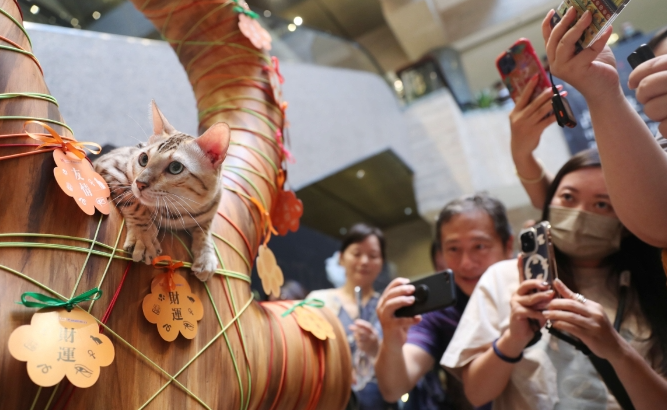The Shanghai Museum recently hosted an unprecedented event, welcoming around 200 pet cats, dressed in fashionable outfits, to the museum for the first cat-themed gathering during the “Fantastic Night” event. The occasion coincided with the exhibition “On Top of the Pyramid: The Civilization of Ancient Egypt,” co-hosted by the Shanghai Museum and the Supreme Council of Antiquities (SCA) of Egypt. This exhibition, which opened on July 19, showcases 788 artifacts from ancient Egypt and aims to promote cultural exchange between China and Egypt. The exhibition will continue until August 2025.
In ancient Egyptian culture, cats were revered, symbolized by the goddess Bastet, who had the head of a cat and the body of a woman. This historical connection resonates with contemporary society’s affection for cats, making the event a natural fit for the exhibition.
Starting July 27, the museum launched ten special sessions called “Fantastic Night,” held on Saturday evenings, allowing visitors to bring their pet cats. The first batch of 200 tickets sold out in one second, and all tickets for the ten sessions were gone within an hour, demonstrating the popularity of the event.
During the event, visitors from across China, accompanied by their stylishly dressed pet cats, explored the exhibition’s sections, including “The Land of the Pharaohs,” “The Secrets of Saqqara,” and “The Age of Tutankhamun.” The “Secrets of Saqqara” section, in particular, highlighted cats, featuring newly unearthed artifacts, including a temple dedicated to Bastet dating back to 600 BC.
The exhibition also offered a unique atmosphere, with cat-themed images projected on the walls and interactive devices for visitors and their pets. A designated photo area allowed guests to capture moments with their cats.
Chu Xiaobo, head of the Shanghai Museum, emphasized the significance of integrating pet-friendly activities with cultural exhibitions. He noted that the museum’s investment in resources was aimed at providing a novel experience for visitors and promoting an inclusive, pet-friendly urban environment.
Concerns about potential stress for the cats were alleviated as most of the animals appeared well-trained and comfortable in the public setting. The museum required all attending cats to have an immunization certificate and provided safety measures, including cat carriers, leashes, and harnesses. Veterinarians, pet ambulances, surgeons, and a pet management team were on standby to ensure the event’s success.
As Shanghai boasts over 1 million pet dogs and more than 1.2 million pet cats, events like this reflect a growing trend of pet-friendly public spaces in the city.

